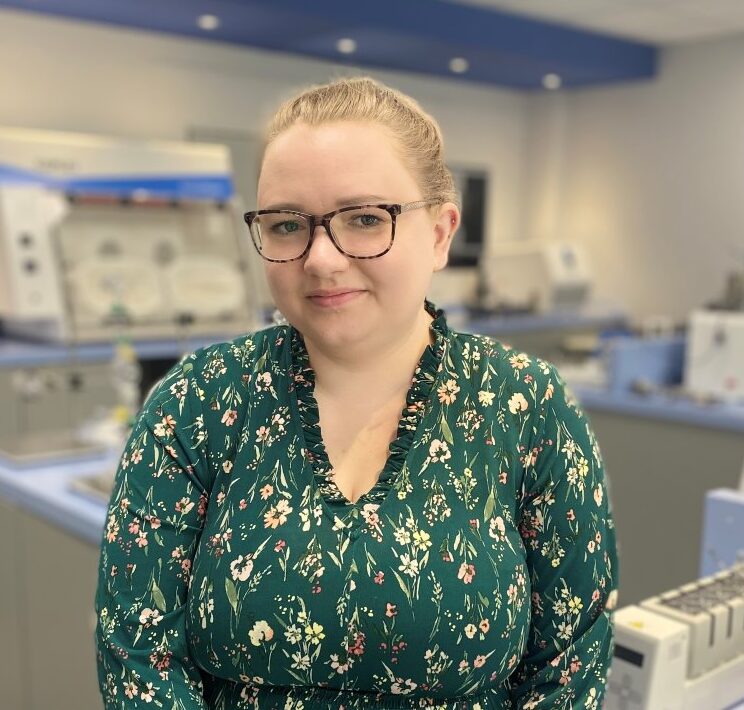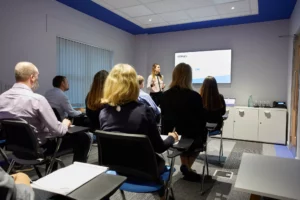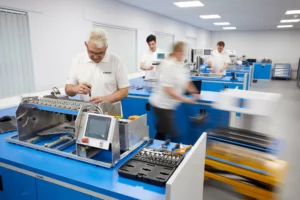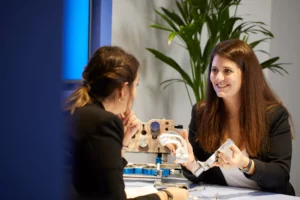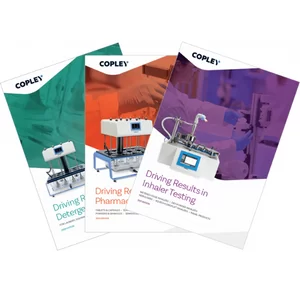Many of you will already have met Clair Brooks, our Applications Specialist; now’s your chance to find out a little more about her…
What drew you to Copley?
Two things stand out for me when I look back at the interview process. The first was it was immediately obvious that Copley functioned as one single, integrated team. So, no silos. It felt like there’d be a shared sense of purpose, I’d be surrounded by knowledgeable people all working to a well-defined goal. And the second was the level of expertise, Copley’s standing in the field. It was clear I’d be learning from the best and that the senior team were committed to establishing a strong Applications Specialist.
What do you like most about the company now you’re part of it?
Well, those initial impressions were correct. I’m now part of a team that is both friendly and exceptional and I really value that. And, perhaps surprisingly, I relish the weight of expectation. We’re the global leaders in orally inhaled and nasal drug product (OINDP) testing, which means expectations both inside and outside the company are high. We have a heritage to preserve and live up to which makes my work feel especially worthwhile.
And how does it compare with previous ones?
My previous role was with a very big company so the major difference – aside from the science – is that I have now have more responsibility and diversity in my day-to-day. I interact with all the other functions internally, and I spend lots of time talking to customers – on the phone, at company HQ, during training sessions, and at international conferences. Being ‘the voice of the customer’ across all our activities is a defining part of my role.
What route did you take to your current role?
I began with a BSc in Biochemistry, keeping my options broad at that stage, then completed a PhD in Molecular Microbiology. I studied the bacterium Yersinia pestis, which is responsible for plague – bubonic, pneumonic and septicaemic. It was very interesting and helped me clarify how I wanted to use my science. Pure lab work wasn’t for me, but neither was commerce. Applications Specialist seemed the way forward and I began working in that capacity for a Molecular Diagnostics company. It was from there that I moved to Copley, transferring the skills I’d developed into a different sphere.
How’s it been getting to grips with inhaled drug delivery?
Fascinating. Obviously, I’d seen inhalers in every day use before diving into the science, but you never really think about how they work, and the testing involved in safeguarding performance. It’s a highly specialised and vital niche of pharmaceutical science. The level of detail involved – the subtle differences between device types, the intricacies of the regulations – is challenging and endlessly engaging.
And so many different areas of science are relevant from human physiology to fluid flow. Earlier in my career I did an internship with an organisation working to reduce animal testing through the application of sound science. Fast forward to today and I’m routinely talking to customers about improving in vitro test set-ups to drive down reliance on in vivo testing, so those early insights are relevant. The Copley team is full of engineers and scientists, all with different experience, and that’s a real strength of the company.
What challenges do you see most often?
Problems with regulations, how to interpret the guidance available and differentiating what’s mandatory from what’s optional. The regulatory framework for OINDPs is still evolving and can be difficult to navigate.
These complex combination products were first commercialised by a small number of expert groups working in ‘big pharma’. Today the OINDP ecosystem is far more diverse and geographically spread, reflecting pressing need for the products across the globe. There is strong motivation for regulators to tackle hurdles to approval but within the defining constraint of ensuring safety. The FDA is particularly active in this regard and new product specific guidances are being added at pace. These put greater emphasis on in vitro testing so that’s a change that we’re currently helping developers to understand. The new USP 1604 on cascade impactor data analysis is also throwing up some questions and prompting debate across the community.
What’s your favourite part of the job?
The conferences are a regular highlight. I love the travel, but it’s the sense of community and the chance to meet customers from all over the world that’s the real joy. There’s so much open discussion, it’s great to be a part of it.
If you could pass on one piece of advice to inhalation scientists, what would it be?
Actually, it would be connected with my answer to the previous question because I’d say: ‘Don’t reinvent the wheel, tap into and build on the experience that you can access’. There are some amazing experts in this field with decades of consolidated knowledge to share. Getting out or reaching out and speaking to people who understand the issues is the way to learn and progress efficiently.
What’s a typical day for you?
I don’t really have a typical day – a plus point – but there are certain activities that occupy much of my time.
Customer interactions of all types top the list – emails, calls, demos and training. A lot of this is helping customers decide what equipment will suit them best, given what they are trying to achieve. Also troubleshooting if they have issues that they can’t solve. My role isn’t sales driven. Rather it is to know the products and software inside out so that I can go well beyond traditional first line support to ensure customers use the right equipment, in an optimal way.
In terms of internal interactions discussing design is a major one. We’re continuously improving the product portfolio, to meet evolving regulatory requirements, in line with customer feedback, or simply because we can see a better way to do things. I have a unique perspective to contribute there and it’s always interesting to see new equipment taking shape. I may also help sales with quoting, from the perspective of ensuring a customer has everything they need to succeed. Last but not least, developing educational content is an important part of the role from webinars to conference talks.
And what’s the perfect ending?
The best days are those on which I feel like I’ve really helped a customer to move forward, to solve a problem or understand an issue. Those are the days that end with me heading home very happily to a relaxing evening with my fiancée and our small army of animals (2 dogs, 3 cats – too many!). A pretty perfect ending.
